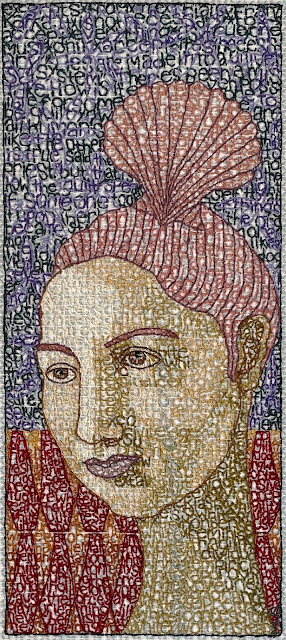"One does not become enlightened by imagining figures of light, but by making the darkness conscious " - Carl Jung
Befriending The Shadow is hand-stitched on monks cloth. I created it using a weaving technique with tapestry needles and yarn as well as using free stitch with embroidery floss. This piece portrays my child self with a large creature inspired by a Tasmanian devil. I got curious about what the animal looks like in real life, because the only idea I had of it was from the Looney Tunes cartoon I watched when I was a kid. For me it's the perfect symbol of the unconscious shadow as a kind of monster because of my association with it as a child. Here, as an adult observer and creator, I retell a story about what it means: the creature appears docile and wears a harness, turning something overwhelming into a being that can be known and even befriended. Each image has a specific meaning, including a staircase that connects the depiction of waking conscious life with the emerging awareness of what's underneath.
Here's a short poem I wrote about it:
Befriending The Shadow
you stand at the top of the slide
on the stage with the curtains and the veil
surrounded by tears made out of stars
that fall into the basement
like waves
where the monster lives
with the fear
and the grief
and the rage
and you have always been here
while the monster waits
with endless
patient
grace















